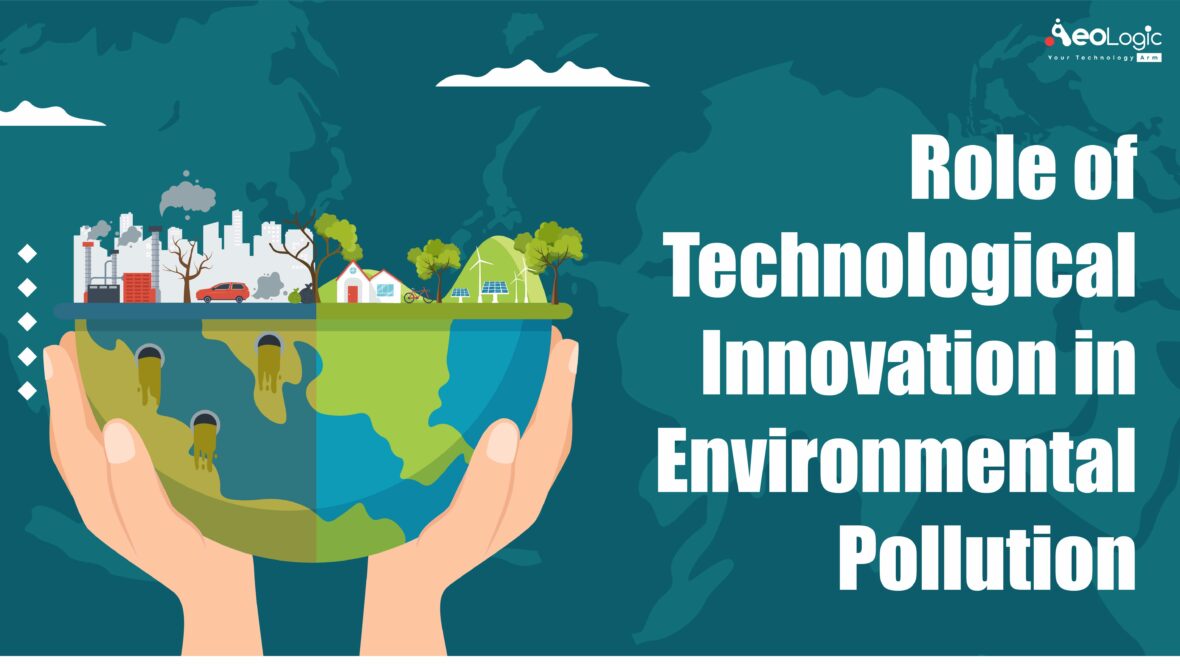Technology is speeding up the decentralization of the economy, which is distributing decisions among various organizations. Hence, leaving the economy’s stability vulnerable to the rule of supply and demand. And thus, making the consequences of computing more prevalent. The role of technological innovation in environmental pollution is emerging right now from different sectors — some with conscious regard for environmental impact and some not. The direct correlation between technological developments and environmental impacts is leading people to create ways to reduce and solve these challenges.
Also read: Use of Technology to Eliminate Environmental Pollution
Let’s find out the role of technological innovation in environmental pollution.
Blockchain and Compute Power
Blockchain is the foundation for cryptocurrency. This technology can be applied to a number of use cases that are benefitting society. However, any blockchain application is requiring a significant amount of computing power.
These benefits include enabling the logistics industry for boosting sustainable practices. Therefore, allowing product transparency and efficient management to optimize traceability and integrity. According to Gartner, blockchain is optimizing several sustainable innovations, including logistics management and green transportation, tokenized incentives, and rewards for net zero activities. As well as authenticating and certifying carbon credits and offsets. Blockchain is also helping the construction industry in calculating embodied and operating carbon. Hence, facilitating in optimization of carbon management, carbon trading, and proper energy management.
Hydrogen in the Energy Transition
Another role of technological innovation in environmental pollution is the importance of hydrogen in the energy transition. It’s difficult to imagine how we get ambitious global warming benchmarks without including hydrogen as a crucial part of the solution. Hydrogen-led pathways to clean up the environment project hydrogen powering more than 400 million cars, and 15 to 20 million buses. And more than 20 % of passenger ships and locomotives by the year 2050. Although battery-powered electric vehicles show overall higher fuel efficiency, hydrogen-powered fuel cells can keep more energy with less weight. This is making them an ideal solution for heavy cargo vehicles that must travel long distances.
In short, hydrogen fuel could help the world meet its target of decreasing carbon dioxide emissions by 60 percent. Although the important technology exists today, the costs of producing hydrogen require to decline significantly. And the infrastructure that is supporting, it needs a step up. Hydrogen could help in the smarter use of other renewables by acting as a long-term transport and storage solution for renewable electricity. It could be a major enabler in the energy transition.
Plastic recycling.
260 million tons of plastic waste is produced across the world every year, yet only 16 percent gets recycled. The plastics industry is having the opportunity to shift away from a “take, make, and dispose” business model and take a circular model. Which aims to eradicate waste across sectors while creating economic, societal, and environmental advantages. One promising circular process is pyrolysis, which incorporates heat and the lack of oxygen to reconvert plastic waste back into liquid feedstock. The advantages are economic as much as environmental, with a recycling-based profit pool anticipated at $55 billion by the next decade. Plastic recycling plays an important role of technological innovation in environmental pollution.

Also read: The Role of Technology in Sustainable Development
Innovating Responsibly
As technologies persistently develop, we are forced to consider the environmental impacts. There will always be a tug-of-war between new ways to incorporate computing to solve environmental problems and the potential effects those solutions have on our environment. It is, therefore, imperative to balance innovation and solve the issues those advancements create. Therefore, the role of technological innovation in environmental pollution is very important.
To discuss how technology can help solve real-world business problems, contact us!
FAQs
How does technological innovation impact the environment?
Modern environmental technology is enabling us to capture this naturally occurring energy and convert it into electricity. Or even, useful heat through devices such as wind turbines, solar panels, and water turbines, which is reflecting a highly positive impact of technology on the environment.
What is the role of technology in decreasing pollution?
Process controls such as sensors and meters can make several production processes more efficient and less polluting by giving improved control. Which helps in reducing waste and defects. Centrifuges can decrease the number of solids in wastewater, thereby reducing water pollution.






